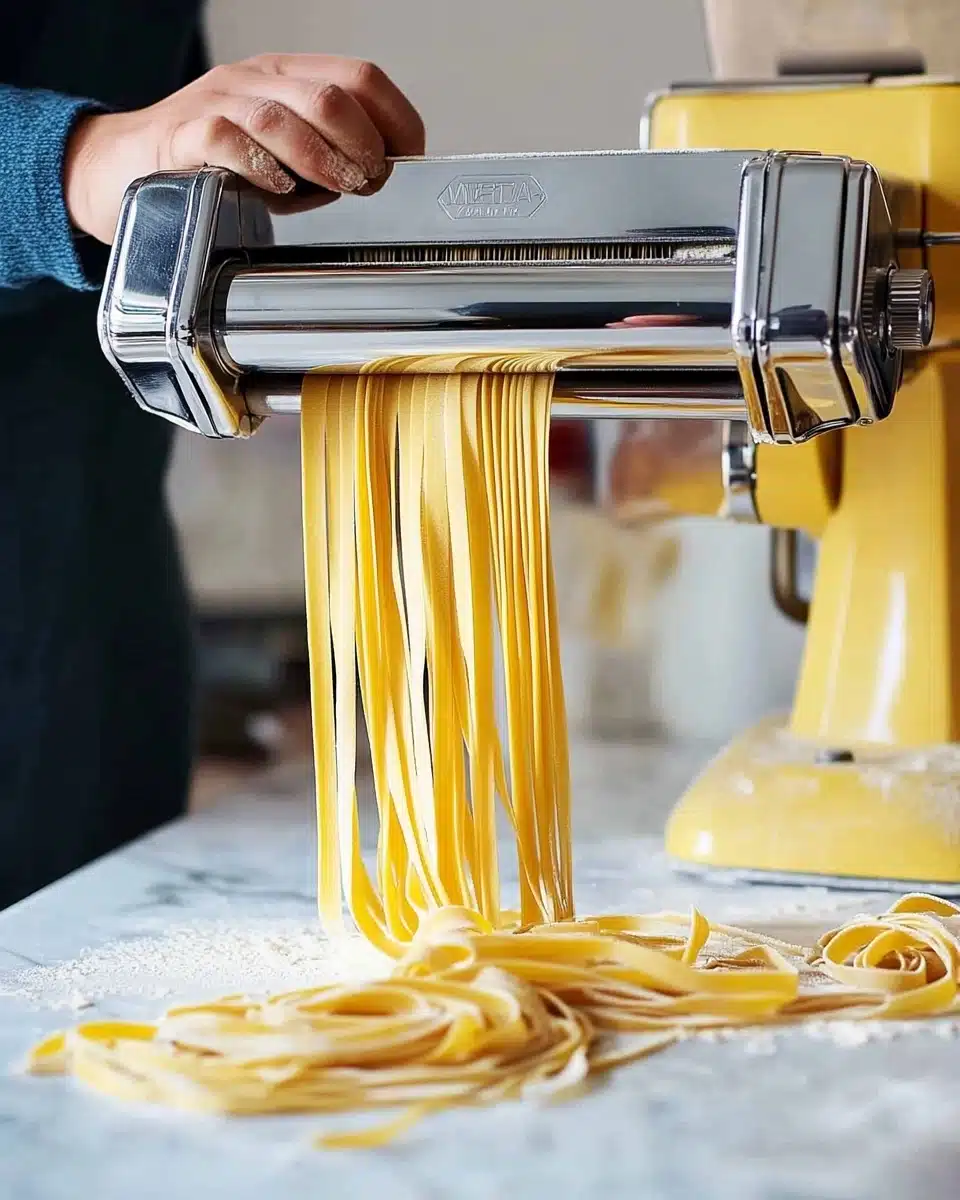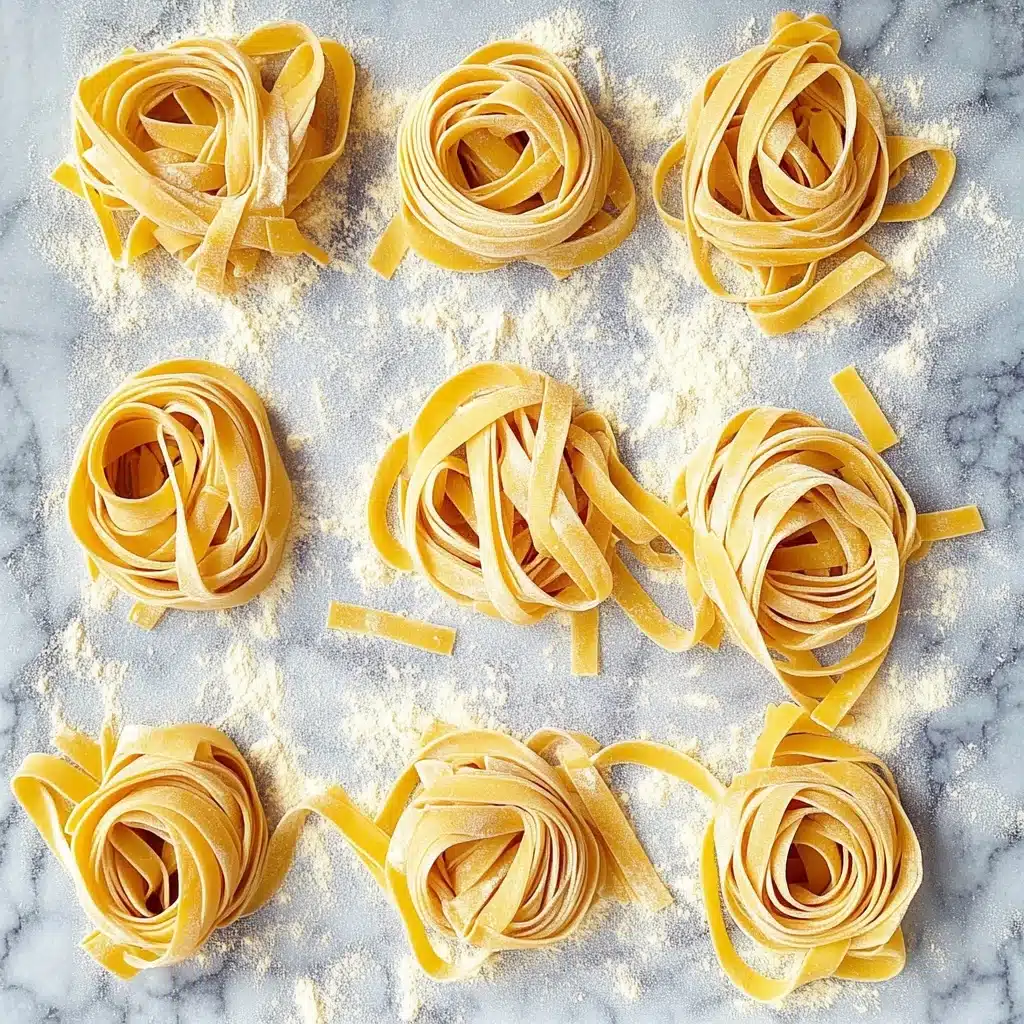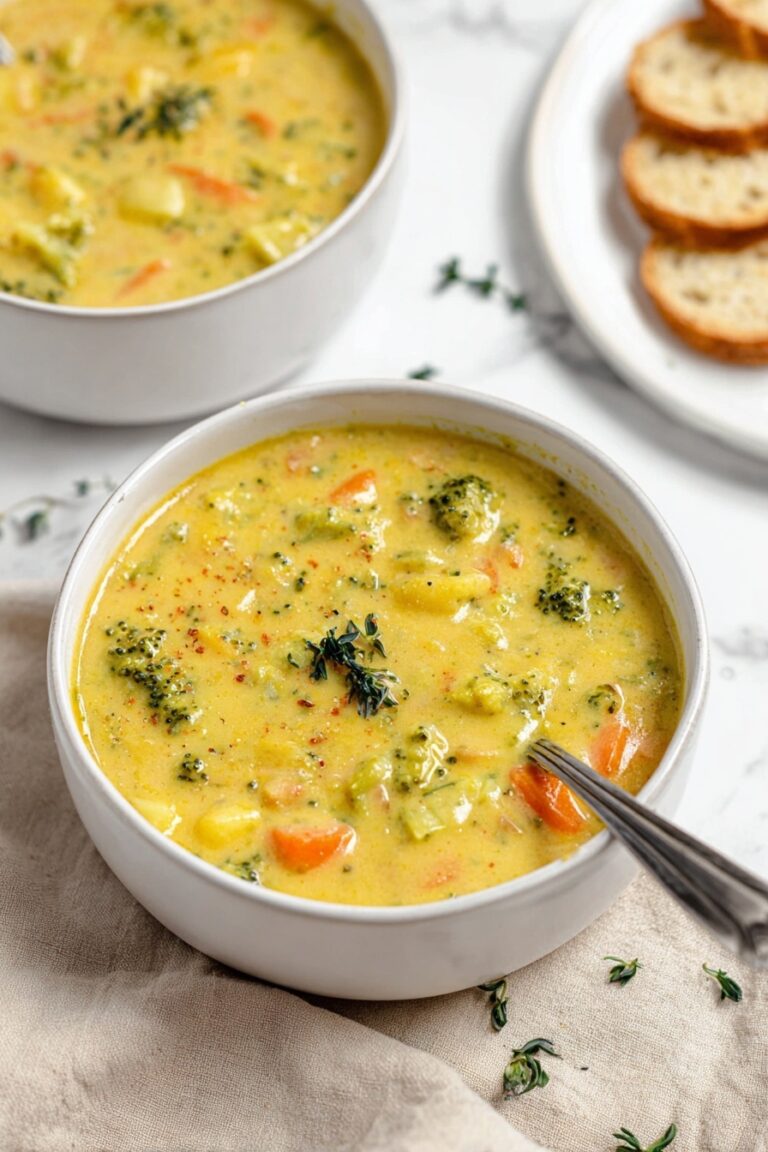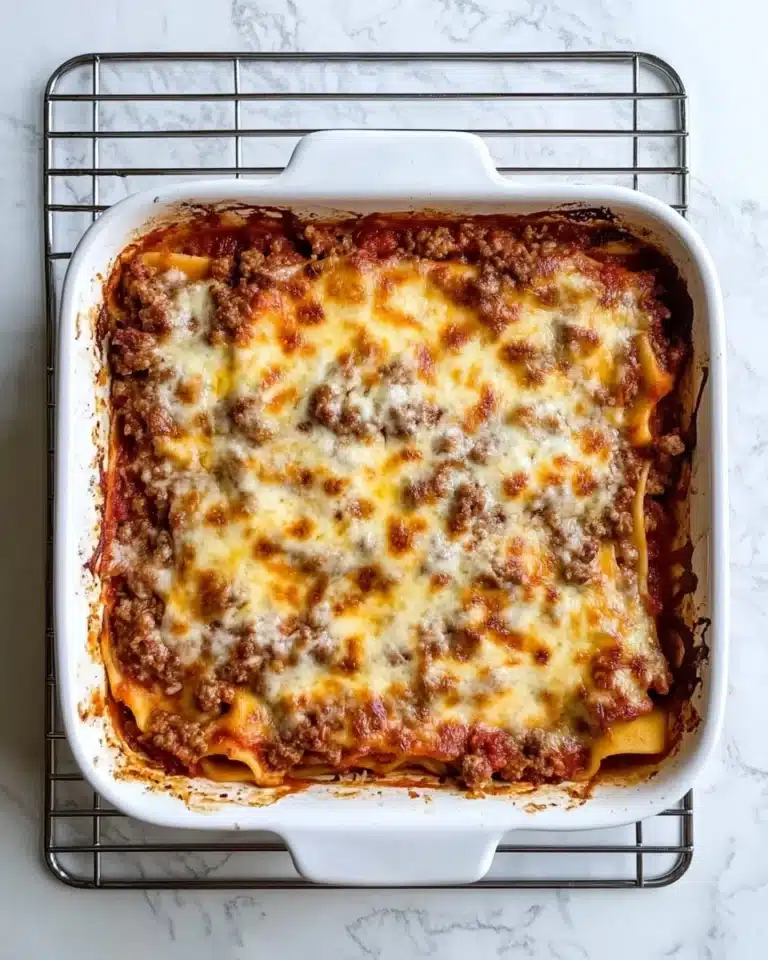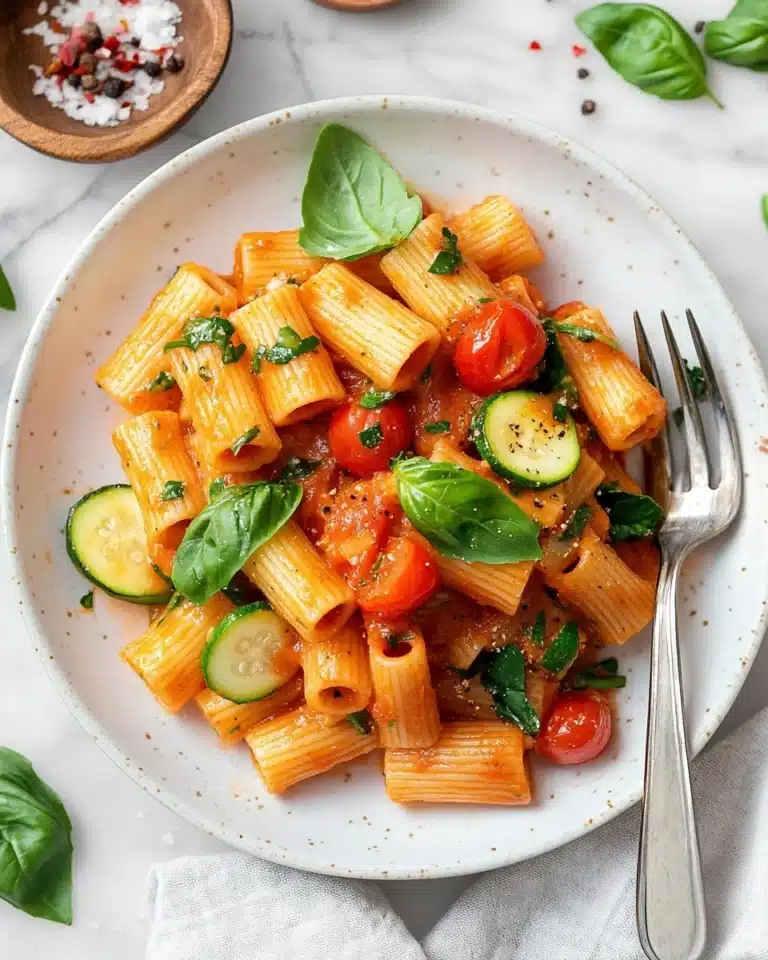There’s truly nothing like a bowl of Homemade Pasta—tender, richly flavored, and made entirely by your own hands! This simple staple transforms just a few basic ingredients into a silky, satisfying dish that makes dinner feel extra special. Whether you love twirling tagliatelle or crave classic fettuccine, this recipe lets you experience the magic of pasta from scratch in your own kitchen.
Why You’ll Love This Recipe
- Fresh, Authentic Taste: Homemade Pasta has a pure, eggy flavor and a delicate texture you just can’t get from dry boxed pasta.
- Totally Customizable: Shape and cut the dough into anything from classic fettuccine to rustic pappardelle or even lasagna sheets—your pasta, your way!
- Therapeutic Kitchen Fun: Kneading and rolling pasta dough is a satisfying, hands-on process (and a fun activity to do with family or friends).
- Minimal Ingredients: You only need flour, eggs, olive oil, and salt for a foolproof dough—no special flours or exotic add-ins required.
Ingredients You’ll Need
Just four pantry ingredients stand between you and fresh Homemade Pasta. Each one plays a key part in achieving that irresistible bite, golden color, and subtly rich flavor.
- All-purpose flour: The backbone of your dough, all-purpose flour strikes the perfect balance between elasticity and tenderness for pasta that rolls beautifully and cooks up silky smooth.
- Large eggs: Eggs bind the dough, add richness and gorgeous color, and provide that unmistakably “homemade” pasta flavor.
- Sea salt: A touch of sea salt seasons every bite, enhancing both wheat and egg notes in the pasta.
- Extra-virgin olive oil: Just a bit of olive oil makes the dough supple, pliable, and easy to work with—especially helpful if you’re rolling by hand.
Variations
Homemade Pasta is endlessly adaptable. Feel free to play with flours, flavorings, or shapes to suit your mood, pantry, and dietary needs—it’s a blank canvas for your culinary creativity.
- Spinach Pasta: Blend cooked spinach into your eggs before adding to the flour for vibrant green dough (and a little extra nutrition).
- Whole Wheat Pasta: Substitute half the flour with whole wheat flour to add a slightly nutty flavor and extra fiber.
- Herb-Infused Pasta: Knead in a bit of finely chopped fresh basil, parsley, or chives for an aromatic and colorful upgrade.
- Gluten-Free Option: Use a 1:1 gluten-free all-purpose flour blend formulated for pasta making for a wheat-free alternative.
How to Make Homemade Pasta
Step 1: Make the Dough “Nest”
Start by mounding your flour directly on a clean work surface and creating a well—or “nest”—in the center. Add your eggs, olive oil, and salt to the well, then use a fork to gently whisk the eggs, slowly incorporating the flour from the nest walls as you go. Don’t worry if a little egg escapes—it’s part of the rustic charm!
Step 2: Bring Dough Together
Switch to your hands when the dough becomes shaggy. Gradually mix in the flour and work everything together until it forms a rough ball. At first, it may look dry or crumbly—just keep gathering those bits and kneading, and you’ll see it come together.
Step 3: Knead & Rest
Now the magic happens: knead the dough with the heels of your hands for 8 to 10 minutes. If it feels stiff, trust the process—your warmth and patience will transform it into a silky, cohesive dough. Once smooth, shape it into a ball, wrap it snugly in plastic wrap, and let it rest at room temperature for 30 minutes. This makes the dough beautifully pliable and much easier to roll.
Step 4: Roll Out the Dough
Dust two baking sheets with flour. Cut your rested dough into four pieces; flatten one piece into an oval disc with your hands or a rolling pin. Run it through your pasta machine’s widest setting (level 1) three times, folding it after each pass to smooth out the surface and build strength. Repeat with the remaining pieces.
Step 5: Laminate & Thin the Sheets
After the initial rolling, fold the short ends of your dough in to meet at the center, then fold in half to create a neat rectangle. Feed it through the machine again, this time progressing through the settings until you reach your desired thinness (for fettuccine, levels 4 to 6 are ideal). Generously flour the dough as you go to prevent any sticking.
Step 6: Cut & Cook the Pasta
Lay half of each pasta sheet on a floured baking sheet, sprinkle with more flour, then fold the other half on top—this keeps everything from sticking while you work. Attach the pasta cutter to your machine (or use a sharp knife if rolling by hand) and cut your pasta into your favorite shapes. Boil in salted water for just 1 to 2 minutes until perfectly al dente—fresh pasta cooks fast!
Pro Tips for Making Homemade Pasta
- Test Dough Consistency: Don’t be afraid to sprinkle a few drops of water if dough feels too dry—or dust a bit more flour if sticky—during kneading; small tweaks mean silky noodles!
- Flouring is Your Friend: Use extra flour with every step when rolling and cutting to keep sheets and ribbons from sticking or tearing.
- Let Resting Do Its Magic: Allowing the dough to rest fully makes rolling so much easier and the gluten relaxes, leading to amazing texture.
- Cook Right Before Serving: Homemade Pasta is best cooked just before serving—it goes from perfect al dente to overcooked in seconds!
How to Serve Homemade Pasta
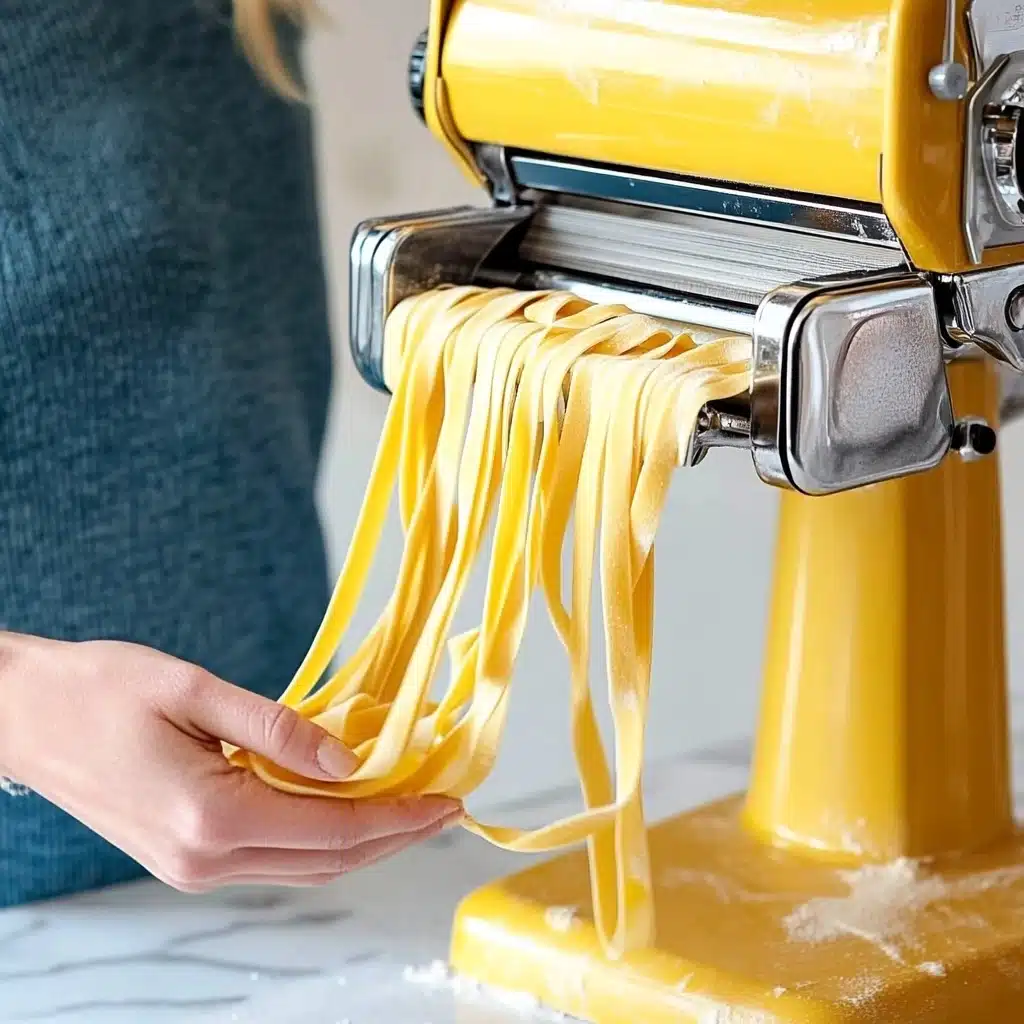
Garnishes
For a picture-perfect finish, try showering your Homemade Pasta with freshly grated Parmigiano-Reggiano, cracked black pepper, or torn fresh basil leaves. A drizzle of good olive oil or a dusting of lemon zest can also brighten things up beautifully without overpowering the pasta’s delicate flavor.
Side Dishes
Pair your fresh pasta with simple sides like a crisp arugula salad, garlicky sautéed greens, or a loaf of warm, crusty bread to scoop up every last drop of sauce. Roasted vegetables or a platter of marinated olives make it a Mediterranean feast.
Creative Ways to Present
Twirl mounds of fettuccine into neat nests for an elegant main course, or arrange colorful pasta ribbons on a large platter for family-style sharing. Top each bowl with delicate microgreens or edible flowers for a restaurant-worthy presentation that impresses every guest.
Make Ahead and Storage
Storing Leftovers
If you have leftover cooked Homemade Pasta, toss it lightly in olive oil to prevent sticking and store in an airtight container in the fridge for up to 2 days. Refrigeration keeps it fresh but best enjoyed soon after cooking for optimal texture.
Freezing
For longer storage, arrange uncooked pasta nests on a floured baking sheet and freeze until solid. Transfer to a freezer bag and keep for up to a month. Cook straight from frozen—no need to thaw—just add an extra minute in boiling water.
Reheating
To reheat cooked Homemade Pasta, quickly dunk it in boiling water for 20-30 seconds, or toss it into a hot saucepan with a splash of your favorite sauce until warmed through—this revives its springy texture perfectly.
FAQs
-
Do I need a pasta machine to make Homemade Pasta?
No, you don’t! While a pasta machine makes rolling and cutting easier and faster, you can absolutely roll out Homemade Pasta by hand with a rolling pin and cut shapes using a sharp knife or pizza wheel.
-
Why does my dough feel too dry or too sticky?
Dough texture can change based on egg size, humidity, and flour. If it’s too dry, simply wet your fingers and knead in a teaspoon of water at a time. If sticky, dust with a bit more flour as you knead and roll.
-
Can I flavor Homemade Pasta with herbs or spices?
Absolutely! Add finely chopped herbs (like parsley, basil, or thyme) into your flour before mixing, or try a dash of cracked pepper or a pinch of saffron for a beautiful twist on traditional Homemade Pasta.
-
How do I prevent fresh pasta noodles from sticking together?
Generously dust pasta sheets and cut noodles with flour at every stage. If you’re stacking or folding pasta, be sure each layer is floured, and separate nests on trays to allow for airflow before cooking.
Final Thoughts
If you’ve never made Homemade Pasta before, there’s truly magic in shaping dough with your own hands and savoring every silky bite. Give it a try—you’ll create more than a delicious meal; you’ll make a memory to share around the table. Happy pasta making!
Print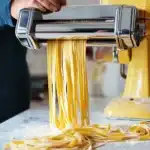
Homemade Pasta Recipe
- Prep Time: 30 minutes
- Cook Time: 2 minutes
- Total Time: 1 hour 2 minutes
- Yield: 3 to 4 servings
- Category: Stovetop
- Method: Stovetop
- Cuisine: Italian
- Diet: Vegetarian
Description
Learn how to make delicious homemade pasta from scratch with this easy-to-follow recipe. With just a few simple ingredients, you can create fresh pasta that will elevate any dish.
Ingredients
Dough:
- 2 cups all-purpose flour, spooned & leveled
- 3 large eggs
- 1/2 teaspoon sea salt
- 1/2 tablespoon extra-virgin olive oil
Instructions
- Prepare the Dough: Place the flour on a clean work surface and make a nest. Add the eggs, olive oil, and salt to the center. Gently mix with a fork, gradually incorporating the flour until a shaggy ball forms. Knead the dough for 8-10 minutes until smooth. Let it rest for 30 minutes.
- Roll the Pasta: Divide the dough and roll it through a pasta maker several times, gradually thinning it out. Cut the sheets into desired shapes using a pasta cutter.
- Cook the Pasta: Boil salted water and cook the fresh pasta for 1-2 minutes until al dente. Drain and serve with your favorite sauce.
Nutrition
- Serving Size: 1 serving
- Calories: Estimated 200 kcal
- Sugar: 1g
- Sodium: 300mg
- Fat: 3g
- Saturated Fat: 1g
- Unsaturated Fat: 2g
- Trans Fat: 0g
- Carbohydrates: 35g
- Fiber: 1g
- Protein: 7g
- Cholesterol: 70mg

